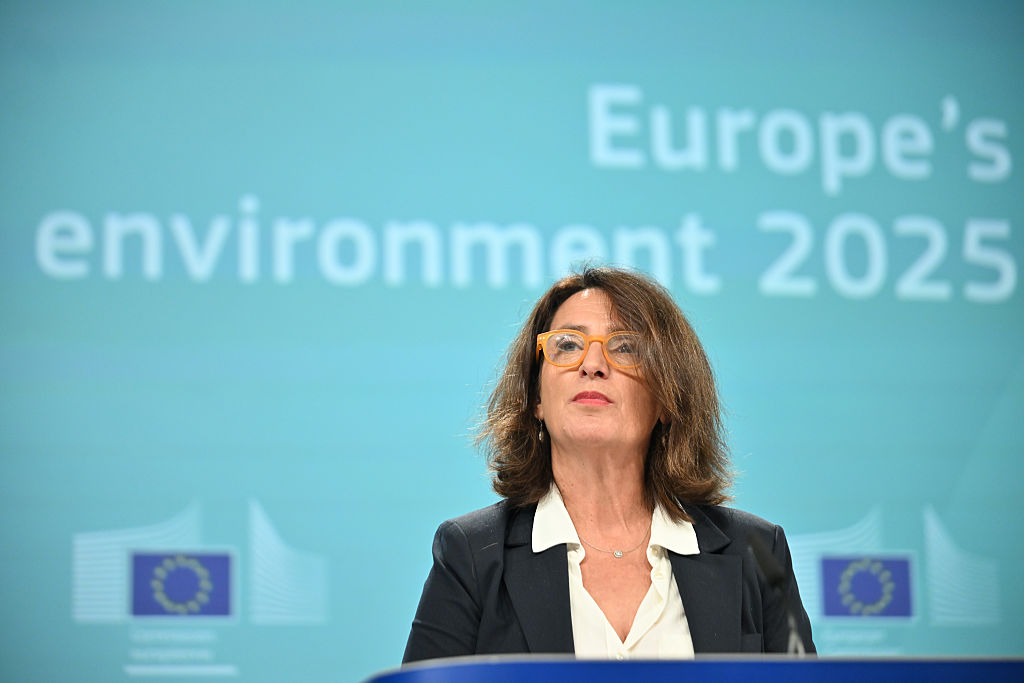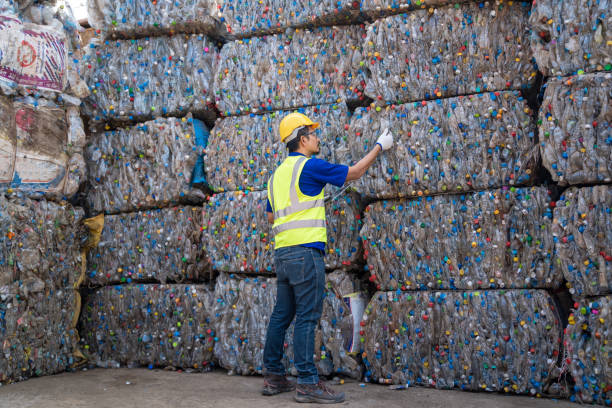EU’s circular economy B2B drive needs competitiveness at its core
Circulatory stakeholders warned that regulatory fragmentation and a one-size-fits-all approaches risk undermining recycling progress

Brussels is sharpening its focus on competitiveness as the bloc accelerates its transition to a sustainable economy, with new frameworks such as the Competitiveness Compass and the Clean Industrial Deal setting the tone for industrial policy. At a Euractiv panel hosted by ABB on 14 October, policymakers and industry leaders debated how Europe can reconcile growth with resource efficiency.
Central to the discussion was circularity – a concept aimed at extending product lifecycles through reduced material use, maintenance, and strategies such as reuse, refurbishment, and recycling. The Ecodesign for Sustainable Products Regulation (ESPR) is designed to embed these principles, improving durability and recyclability across supply chains. Yet stakeholders warned that regulatory fragmentation and one-size-fits-all approaches risk undermining progress.
To promote circularity, the EU must address barriers specific to business-to-business (B2B) and business-to-consumer (B2C) sectors, ensuring tailored regulatory approaches. Key issues include maximising resource use and addressing regulatory gaps.
Consumer dominance
The European Commission is working on the Circular Economy Act and revising the Waste from Electrical and Electronic Equipment Directive (WEEE) to increase recycling within the EU economy. While consumer products dominate the discourse on circular policies, the distinct challenges of industrial circularity must also be recognised. Stakeholders expressed concerns about the adequacy of current regulations in meeting these diverse needs.
The event explored the critical concept of circularity within the context of business operations, emphasising the distinction between industrial and consumer circularity. A one-size-fits-all approach is insufficient to fully realise the potential of circular practices. The Circular Economy Act must be both straightforward and strategic, particularly if new legislation is deemed necessary.
However, it is essential to ensure that existing EU legislation is aligned to work cohesively rather than at cross purposes. For instance, while the Ecodesign for Sustainable Products Regulation (ESPR) encourages recycling, remanufacturing, and circularity, the Waste from Electrical and Electronic Equipment (WEEE) Directive imposes three-year recycling quotas for industrial products, highlighting the need for legislative harmony.
All panellists agreed that achieving commercial viability in circularity is paramount; clear incentives and harmonised regulations are crucial to unlocking investment, fostering innovation, and scaling circular practices.
Economic security
Karolina D’Cunha, acting head of unit for ‘Waste to Resources’ at the European Commission’s environment directorate, noted that Commission plans for a new circular economy act are no secret, but highlighted its importance through three particular aspects of this transition: economic security, competitiveness and decarbonization.
“On economic security we know that our businesses rely very heavily on the imports of materials from third countries, and therefore it is in our best interest to maintain the materials that we already have in our economic system for as long as possible in that system, be it through longer life of products or through better reuse of those materials and recycling,” said D’Cunha.
“Competitiveness is also key. Circular practices help reduce costs for businesses and are very important for manufacturing companies that typically spend more than twice as much on materials as on labour or on energy. So, if we become more circular, then we will also become more competitive.”
She added that regarding decarbonization, “We will not reach our decarbonization goals and targets if we do not go circular because it is estimated that around 20-25% of greenhouse gas emissions can be achieved through more circular practices. So, if we look at these three goals, which are not purely environmental but very economic, that is very clear why we need to go circular.”
Business value chain
Sirpa Pietikäinen MEP, a substitute on the European Parliament’s environment committee, said that the need for coalitions, cooperation, partnerships, and incubators is essential for gathering the entire business value chain and stakeholders; without this, entering the market becomes difficult.
While we have many start-ups, scalability poses challenges, she said legislation is necessary to promote circularity markets, and Europe requires reporting to measure progress. Without information, she said the EU faces financial risk.
“Let’s face the facts. If we want to survive, we need to fit our economic system to planetary boundaries full stop. And that means a totally different kind of economic system where there is no waste. You design out of the waste, and you design the materials to be long-lasting and the products upgradable, reusable, fixable and then down the line to come back into the system as materials. And those economies and businesses that get it will survive. Those who don’t will not,” said Pietikäinen.
Heather Grabbe, senior fellow at the Bruegel think tank, who last year authored a paper on why circularity should be looked at as a competitive tool, explained how she sees the market evolving.
She spoke about why Europe should go circular as well as how.
“The ‘how’ is quite complex, but the why is some fairly essential economic principles. There’s one of waste since waste is always costing money. It costs money to treat it and to deal with it and get it out of the environment. But it’s also a waste of resources. And we in Europe are a resource-poor continent.”
Volatile commodity prices
Grabbe said that “Traditionally, we haven’t thought of ourselves as being resource poor because we’ve always imported lots of resources. That’s what the whole colonial economy was about. But we can’t continue that model. Not only is it inequitable, but also those countries have alternatives to whom they can sell. And volatile commodity prices and the rising cost of materials are a key problem for European competitiveness.”
She added: “Enrico Letta said in his report on the future of the single market last year about how volatile commodity prices and import dependencies are key strategic vulnerabilities of the European Union. In the last few years, we’ve kind of gotten used to the idea that fossil fuels are really expensive for us and therefore we need other sources of energy. But we also need ways of extending the use and the life of the materials already in our system through urban mining and through circularity to maintain both competitiveness and economic security.”
Erich Labuda, president of the motion services division at ABB, took up the thread explaining that ABB works a lot on the ‘how’.
“As ABB, we are basically at the forefront of industrial automation and electrification. We have been around for more than 140 years, really bending the boundaries of what’s possible and as a global leader. It’s not only our duty to push progress but to ensure that technology is really being adopted. More than half of our employees are based out of Europe, with a manufacturing side having research centres where we really drive the technology angle forward,” said Labuda.
“We work pretty much everywhere from industries around using water pumping, to logistics over to food and beverage, as well as in heavy industries like cement, mining and oil and gas. And this is where we basically drive the agenda forward to a low-carbon future”
“Circularity is way more than just recycling it’s a complete shift to how we can change as European companies to drive competitiveness, have superior products in the market that not only are the best products, but are also built to last are durable and are not only good for the pocket but are good for our planet because they are optimized in the minimization of resource waste. In the end, that’s why circularity is so powerful,” he concluded.
This article follows the policy debate “Powering Europe’s future – B2B Circularity for industrial competitiveness”, supported by ABB.
(BM)









